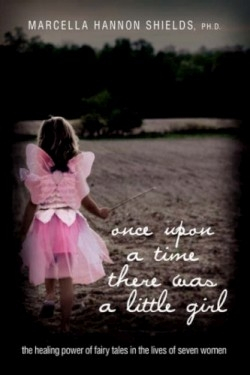Once Upon a Time There Was a Little Girl
The notion that fairy tales can come true is on reflection a scary thought—think of all those wolves and witches.
“The power of fairy tales lies in the fact that they are timeless stories of the struggles of the child who feels abandoned and alone” Dr. Shields writes. “There are three ways of viewing fairy tales: the literal story as it is shared with children who need no interpretation; the personal story which involves viewing the tale from that place in the story where we find ourselves; and the collective or archetypal story which explores what the tale means in relation to the overall communal or cosmic story of humankind.”
A Jungian psychologist with more than thirty years of experience in the United States and Canada Shields invited seven female patients to participate in a seven-month study of the personal and collective aspects of fairy tales as an adjunct to their ongoing therapy.
The women had all experienced childhood traumas stemming from literal or perceived abandonment by their mothers. The seven fairy tales Dr. Shields chose for analysis including “Rumpelstiltskin” “Snow White” and “Briar Rose”—an early version of “Sleeping Beauty”—included no “nurturing maternal presence.”
The author rejects the feminist position that fairy tales are essentially propaganda for paternalistic values—cautionary tales teaching women the consequences of bucking the system. She shows that while this may be true of the Disney-fied versions with which many people may be most familiar in their original forms these ancient stories are not so easily pigeon-holed. Ultimately she says they are parables of empowerment suggesting to children ways to conquer their fears.
The women were instructed to use the Jungian concept of active imagination which involves creating dialogues with key figures in the tales as a way of claiming ownership much as if they were exploring their own dreams. Shields reports their responses and insights both in the initial exploratory sessions and in follow-ups held one and four years later.
Once Upon a Time There Was a Little Girl is written for the lay reader and in general it’s easy to follow. A glossary of technical terms is provided to assist with comprehension. Some chapters are burdened with over-repetition; twice-told tales may help the reader remember salient points but a third or fourth retelling becomes tedious.
In addition to its utility for women who suffer from abandonment or identity issues this book should prove useful to anyone raising girls including mothers grandmothers and single males struggling to compensate for the absence of a maternal presence. “Reflection questions” are included at the end of each chapter to guide the reader through the dark woods of the unconscious towards her own Happily Ever After.
Reviewed by
Marilyn Bowden
Disclosure: This article is not an endorsement, but a review. The publisher of this book provided free copies of the book and paid a small fee to have their book reviewed by a professional reviewer. Foreword Reviews and Clarion Reviews make no guarantee that the publisher will receive a positive review. Foreword Magazine, Inc. is disclosing this in accordance with the Federal Trade Commission’s 16 CFR, Part 255.

